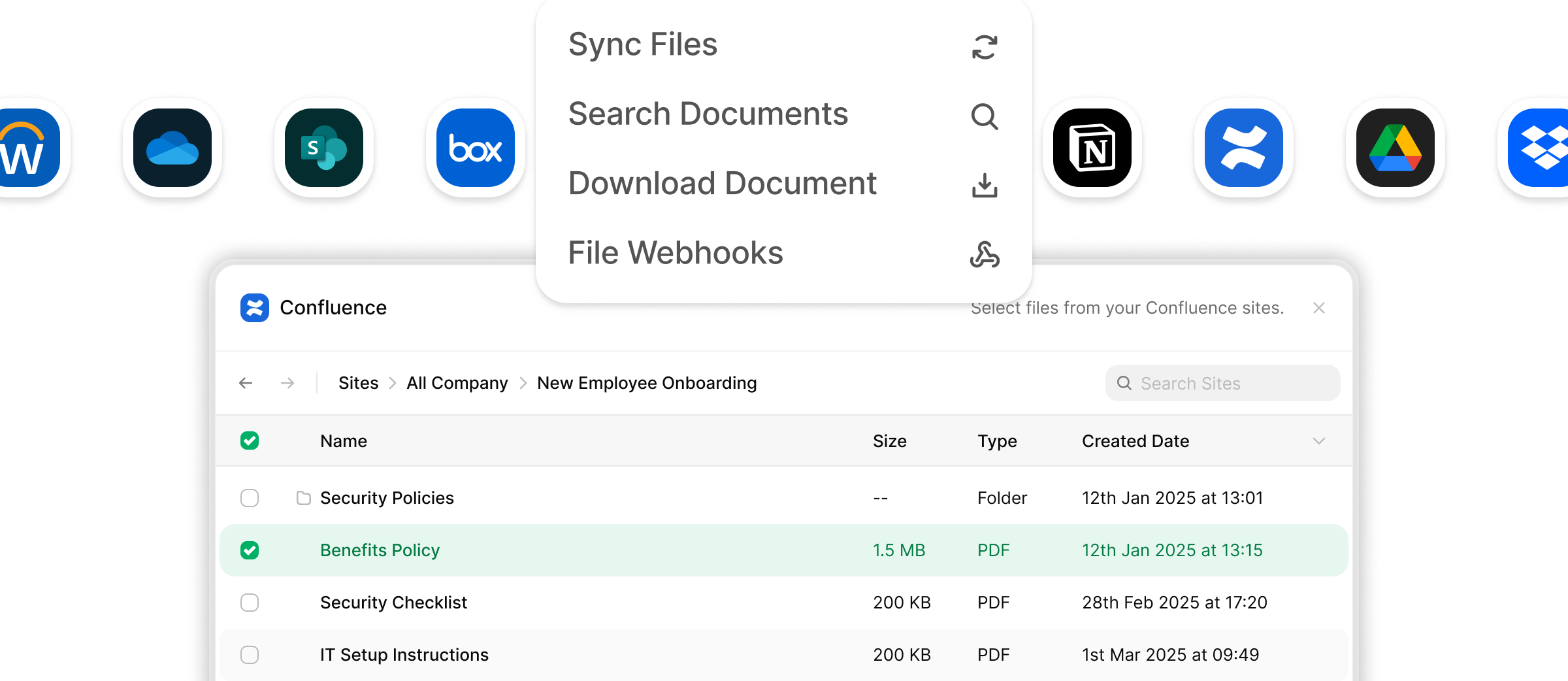
Benefits of the Documents API
Here are some benefits of using our Documents API that simplifies and enhances the processing of files from file storage systems:Real-Time File & Folder Sync
Real-Time File & Folder Sync
Built for easily syncing files, in real-time from multiple providers. Use the api to access nested folders & files data in a simple and unified way, regardless of the underlying provider.
Unified File Picker
Unified File Picker
One File Picker SDK that lets your users pick files from multiple providers, with a single call to the SDK and get back picked files & folders the same way regardless of the provider.
Sandbox Access for Seamless Testing
Sandbox Access for Seamless Testing
Developers can utilize sandbox environments to test integrations without affecting live data, ensuring a smooth deployment process.
Real-Time Data Synchronization
Real-Time Data Synchronization
StackOne’s APIs support real-time synchronization, ensuring that content changes are reflected immediately across connected platforms.
Privacy-First Design Ensuring Compliance
Privacy-First Design Ensuring Compliance
With a focus on security, StackOne ensures secure content storage and maintains compliance with data protection regulations.
Synthetic and Native Webhooks for Updates
Synthetic and Native Webhooks for Updates
The platform provides both synthetic and native webhooks, delivering real-time notifications for changes in drives, folders, and files.
Comprehensive File Management and Knowledge Base Integration Coverage
Comprehensive File Management and Knowledge Base Integration Coverage
StackOne offers out-of-the-box integrations with leading File Management platforms, simplifying the integration process.
StackOne SDKs & OpenAPI Specification
Leverage our official SDKs for seamless integration with the ATS API. Build faster with language-native libraries, full list here
Entity Model and Relationships
The following diagram illustrates the key entities within the Documents API: The following table outlines key entities within the Documents system and provides a brief description of each:| Entity | Description |
|---|---|
| Drives | Represents the top-level storage containers in the document management system. Each drive can contain multiple folders and files, and has basic metadata like name, description, and URL. Drives are typically used to organize content at the highest level, such as by department or project. |
| Folders | Manages hierarchical organization within drives. Folders can contain files and other folders (subfolders), creating a tree structure. Each folder tracks its owner, parent folder, associated drive, and various metadata like size and path. Folders help organize content in a logical structure. |
| Files | Contains the actual documents and their metadata. Each file belongs to a folder and drive, has an owner, and includes important attributes like format, size, and path. Files represent the actual content being managed, with support for various file types and versioning through created/updated timestamps. |

